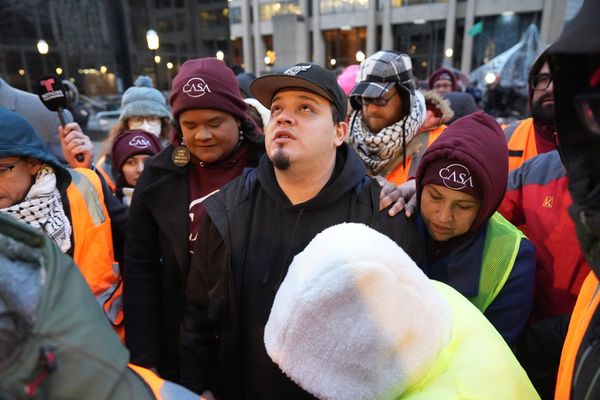
Getting any product to consumers, whether it's a can of sardines or a screwdriver, requires that supply chains function well.
The availability of labor is essential in each link of the supply chain. That includes the workers who make sure that your tinned fish and handy tools smoothly journey from their point of origin to where they'll wind up, whether it's a supermarket, hardware store or your front door.
Amazingly, 90% of all internationally traded products are carried by ships at some point. At the height of the COVID-19 pandemic, it was hard not to notice the supply chain disruptions. For U.S. ports, there were many bouts of congestion. Demand for goods that were either more or less popular than they would normally be became volatile. Shortages of truckers and other freight service providers wreaked havoc on land-based and maritime transportation networks.
Consumers became exasperated when they saw all the empty shelves. They endured price spikes for items that were suddenly scarce, such as hand sanitizer, computer equipment and bleach.
I'm a scholar of supply chain management who belongs to a research group that studies ways to make supply chains better able to withstand disruptions. Based on that research, plus what I learned while writing a book about labor and supply chains, I'm concerned about the turmoil that could be in store for cargo arriving on ships.
Concerns over pay and technology
The International Longshoremen's Association's six-year contract with the East Coast and Gulf Coast ports expired on Sept. 30, 2024, at midnight without an agreement. About 45,000 dockworkers are now on a strike that has paralyzed ports from Maine to Texas. Only military cargo and cruise ships, as well as oil, gas and liquid chemicals, can go in and out.
It's the first such work stoppage for the East Coast ports since 1977.
Labor and management disagree over how much to raise wages, and the union also wants to see strict limits on the use of automation for cranes, gates and trucks at the ports in the new contract. The union is seeking a 77% increase in pay over the next six years and is concerned that jobs may be lost because of automation. When management offered a nearly 50% raise, the union rejected it.
Dockworkers on the West Coast, who are not on strike, are paid much higher regular wages than their East Coast and Gulf Coast counterparts who are on strike. The West Coast workers earn at least an estimated US$116,000 per year, for a 40-hour work week, versus the roughly $81,000 dockworkers at the East Coast and Gulf Coast ports take home, not counting overtime pay.
Management is represented in the talks by the U.S. Maritime Association, which includes the major shippers, terminal operators and port authorities.
What to expect
Starting on Oct. 1, 36 ports, including those in Philadelphia and Houston, ceased operations due to the strike, blocking almost half of the cargo going in and out of the U.S. on ships.
If the strike lasts just a day, then it would not be noticeable to a typical consumer. However, businesses of all kinds would no doubt feel the pinch. J.P. Morgan estimates that a strike could cost the U.S. economy $5 billion every day.
Even if the strike were to last only a day, it could take about five days to straighten out the supply chain.
If a strike lasts a week, the results would quickly become apparent to most consumers.
Some shipping companies have already begun to reroute their cargo to the West Coast. Even had there been no strike at all, costs would have risen and the warehouses could have run out of room.
The effects on everything from bananas and cherries to chocolate, meat, fish and cheese could be severe, and the shipping disruption could also hamper trade in some prescription drugs if the strike lasts at least a week.
If the strike were to last a month or more, supplies needed by factories could be in short supply. Numerous consumer products would not be delivered. Workers would be laid off. U.S. exports, including agricultural ones, might get stuck rather than shipped to their destinations. Inflation might increase again. And there would be a new bout of heightened economic anxiety and uncertainty – along with immense financial losses.
All the while, West Coast ports would face unusually high demand for their services, wreaking havoc on shipping there too.
Yes, we'd have no bananas
My research group's latest work on supply chain disruptions and the effects of various transportation disruptions, including delays, quantifies the impact on the quality of fresh produce. We did a case study on bananas.
This isn't a niche problem.
Bananas are the most-consumed fresh fruit in the U.S.
Many of the bananas sold in the U.S. are grown in Ecuador, Guatemala and Costa Rica. About 75% of them arrive at ports on the East and Gulf coasts.
Although bananas are relatively easy to ship, they require appropriate temperatures and humidity. Even under the best conditions, their quality deteriorates. Long delays will mean shippers will be trying to foist mushy brown bananas on consumers who might reject them.
Alternatively, banana growers may opt to find other markets. It's reasonable to expect to find fewer bananas and much higher prices – possibly of a lower quality. Flying bananas to the U.S. would be too expensive to sustain.
Fresh meat, seafood, cheese and other refrigerated foods could spoil before they can complete their journeys, and fresh berries, along with other fruits and vegetables, could perish before reaching their destinations.
Tons of fresh produce, including bananas arriving after Oct. 1, could end up having to be discarded. That is unfortunate, given the rising food insecurity rate in the U.S.
1947 Taft-Hartley Act
More than 170 trade groups had urged the Biden administration to intervene at the last minute to avoid a strike.
Even now, the government can invoke the 1947 Taft-Hartley Act, which allows the president to ask a court to order an 80-day cooling-off period when public health or safety is at risk.
However, President Joe Biden reportedly does not plan to invoke it. Instead, he has urged the two sides to settle their differences.
So if you're planning to bake banana bread or were thinking you might get an early start on your holiday shopping, I'd advise you to make those shopping trips as soon as possible – just in case.
This is an updated version of an article first published on Sept. 28, 2024.
Anna Nagurney, Professor and Eugene M. Isenberg Chair in Integrative Studies, UMass Amherst
This article is republished from The Conversation under a Creative Commons license. Read the original article.







